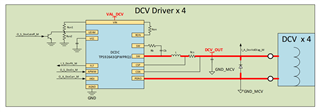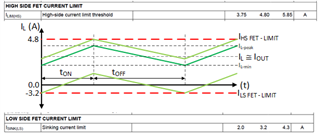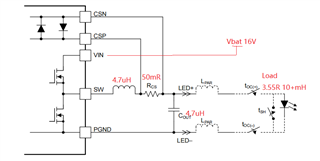Hi team,
My customer wants to use TPS92643-Q1 for a constant current drive design of the solenoid valve and has the following questions:
Q1: How can I merely use UDIM as under-voltage lockout ? In the specification, this port is multifunctional can set VUDIM and Under voltage Lockout. However the threshold voltage of VUDIM is two times larger than Under-voltage Lockout . When it comes to operation voltage, it's very difficult to set an appropriate under-voltage threshold voltage to make the chip work and active the error amplifier and COMP compensation.
Q2: The below picture shows how we want to use UDIM, APWM, and IADJ. We want to set UDIM as under voltage lockout also controlled by MCU to actively cut the ship off , APWM as Enable with 100% duty pwm to enable or disable the ship, and IADJ as the current modulation by timely input different voltage . Here is my question, if I disable the chip or totally shut down it, would there be some logical problem like firstly pull down IADJ , then the APWM , finally the UDIM, wouldn't it?

Thanks!

Regards,
Ivy







